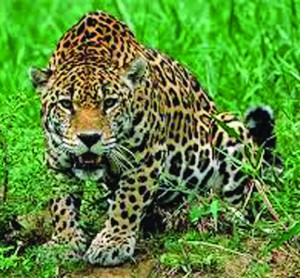By Samuel Sukhnandan –
Natural Resources and Environment Minister Robert Persaud said because of Guyana’s vast terrain, large cats and other animals can indeed pose a threat to citizens. Persaud’s comments come in light of concerns raised by citizens of North Ruimveldt, Georgetown where a jaguar has been roaming.
Persaud told Guyana Times International on Tuesday that people are usually encouraged to capture these animals, once they pose a threat to a community.




